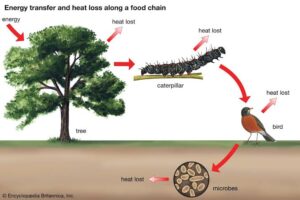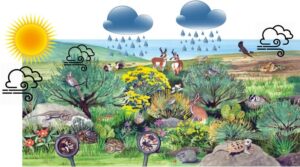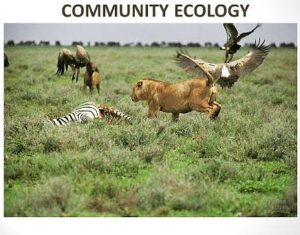Back to: Environmental Biology 100 Level
Welcome to class!
Hello superstar learner! I’m so glad you’re here today because we are about to learn an exciting topic that explains how different species live together in nature. Today’s topic is Community Ecology, and by the end of this lesson, you’ll understand how plants, animals, and other organisms interact in a shared environment.
Community Ecology
Have you ever walked through a Nigerian rainforest and seen trees, birds, insects, and monkeys all living together? That mix of different species in one place is called a community. Studying how these different species interact and depend on each other is what community ecology is all about.

What is Community Ecology?
Community ecology is the study of how different populations of species interact within the same area and how these interactions shape the structure and dynamics of the community. A biological community includes all the living organisms in a particular habitat.
For example, in a river community, you can find fish, frogs, aquatic plants, and insects living together.
Structure of a Community
A community has certain characteristics:
Species Diversity: The variety of species present in the community. For example, the African savanna has grasses, zebras, lions, and birds.
Species Abundance: The number of individuals of each species.
Dominant Species: Species that are most abundant or have the greatest influence in the community. In a tropical forest, tall trees often dominate.

Trophic Structure: How energy flows through the community in food chains and food webs.
Types of Species Interactions
In a community, species do not live in isolation; they interact in many ways:
Competition: When two species compete for the same resources, like goats and cows feeding on grass.
Predation: One species (predator) eats another (prey). Example: Lion hunting antelope.
Mutualism: Both species benefit. Example: Bees pollinating flowers.
Commensalism: One species benefits while the other is unaffected. Example: Birds building nests on trees.
Parasitism: One benefits while the other is harmed. Example: Ticks feeding on cattle.
Community Stability and Succession
Communities can change over time:
Ecological Succession: A natural process where communities change and develop.
Primary Succession: Begins on bare surfaces like rocks.
Secondary Succession: Happens after a disturbance, like farmland turning back into forest.
Climax Community: A stable, final stage of succession, like a mature tropical rainforest.
Importance of Community Ecology
Helps us understand how species depend on each other.

Guides conservation and habitat management.
Explains biodiversity and ecosystem health.
Summary
Community ecology studies how different species interact within a habitat. It looks at species diversity, interactions like competition and mutualism, and processes like succession. Communities change over time but work together to maintain balance in nature.
Evaluation
- What is a biological community?
- Name three types of species interactions and give examples.
- What is the difference between primary and secondary succession?
Fantastic job today! Understanding community ecology helps us appreciate the balance of nature and the need to protect biodiversity. Keep learning with Afrilearn—you’re becoming a true environmental expert! See you in the next class.
